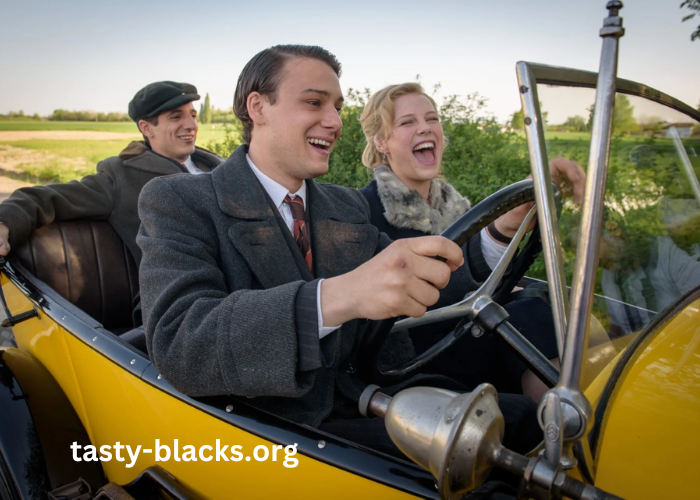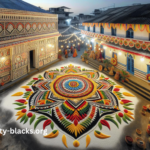The name Lamborghini resonates with passion, power, and luxury in the automotive realm. It is a brand synonymous with high-performance sports cars that captivate enthusiasts and collectors alike. At the heart of this illustrious legacy is Ferruccio Lamborghini, a visionary who transformed his dreams into reality. The narrative of Lamborghini : L’homme Derrière LA Légende is not merely about fast cars; it is a story of ambition, innovation, and a relentless pursuit of excellence. This article delves into Ferruccio Lamborghini’s life, the inception of his iconic brand, and how his vision continues to influence the automotive industry today.
Who Was Ferruccio Lamborghini?
Ferruccio Lamborghini was born on April 28, 1916, in Cento, Italy. Raised in a family of grape farmers, Ferruccio developed a fascination for mechanics early on. After serving in the Italian Air Force during World War II, he turned his attention to the agricultural sector. In 1948, he founded Lamborghini Trattori, a company that manufactured tractors using surplus military equipment. This venture proved immensely successful, enabling him to achieve financial stability and pursue his passion for automobiles.
Despite his success in the tractor business, Ferruccio’s true passion lay in luxury sports cars. This desire was fueled by an encounter with a Ferrari that left him dissatisfied with its performance and customer service. After a confrontational discussion with Enzo Ferrari, Ferruccio was inspired to create his own line of high-performance cars. This pivotal moment marked the beginning of his journey into the world of supercars, leading to the birth of Automobili Lamborghini in 1963.
What Inspired Ferruccio to Create Lamborghini?
The founding of Lamborghini was driven by a personal desire to craft a car that could rival the established giants of the automotive industry, particularly Ferrari. Ferruccio’s experience with his Ferrari 250 GT, coupled with the snub he received from Enzo Ferrari, ignited a fierce determination within him. He envisioned a car that blended luxury with performance, a vehicle that offered both comfort and exhilaration.
Ferruccio’s passion for engineering and design fueled his ambition. He believed that a car could be more than just a mode of transportation; it could be a work of art, a testament to human ingenuity. His aim was to produce vehicles that not only performed exceptionally but also embodied Italian craftsmanship and style. This vision laid the foundation for the brand’s ethos, leading to the creation of some of the most iconic cars in history.
What Were the First Models of Lamborghini?
Lamborghini’s inaugural model was the 350 GT, introduced in 1964. This grand tourer was a significant achievement for Ferruccio and his team, showcasing a powerful V12 engine and stunning design. The 350 GT set the stage for Lamborghini’s reputation for quality and performance. It was well-received by critics and car enthusiasts, helping to establish the brand in a competitive market.
Following the success of the 350 GT, Lamborghini unveiled the Miura in 1966. Often regarded as the first true supercar, the Miura revolutionized automotive design with its mid-engine layout and stunning looks. It became an instant classic, capturing the imagination of car lovers worldwide. The Miura’s performance and striking aesthetics positioned Lamborghini as a formidable player in the luxury sports car market, setting a new standard for what a supercar could be.
Other early models, such as the Espada and the Jarama, continued to build on Lamborghini’s reputation for innovation. These vehicles offered a blend of performance and practicality, catering to a wider audience while maintaining the brand’s luxurious image.
How Did Lamborghini Establish Its Brand Identity?
Lamborghini’s brand identity was shaped by Ferruccio’s vision of creating high-performance luxury vehicles. From the outset, the brand positioned itself as an exclusive manufacturer of supercars, appealing to affluent customers who sought both speed and prestige. The unique design language of Lamborghini cars, characterized by sharp lines and aggressive styling, set them apart from competitors and became a defining feature of the brand.
Marketing played a crucial role in establishing Lamborghini’s identity. Ferruccio understood the importance of exclusivity and targeted a select clientele. By emphasizing performance and luxury, Lamborghini cultivated an image of aspiration and desirability. The brand’s participation in motorsport, particularly in endurance racing, further solidified its reputation as a manufacturer of high-performance vehicles.
The use of vibrant colors and bold designs also contributed to Lamborghini’s identity. Each model tells a story of power and performance, capturing the essence of Italian engineering. This distinctive visual identity has become synonymous with the brand and continues to resonate with car enthusiasts and collectors today.
What Challenges Did Lamborghini Face Throughout Its History?
Lamborghini’s journey was not without its challenges. The oil crisis of the 1970s significantly impacted the luxury car market, leading to declining sales and financial struggles for the company. In 1972, Lamborghini faced bankruptcy, and the brand was sold to a group of investors. Despite these setbacks, Lamborghini managed to rebound, introducing the Countach in 1974. This model revitalized the brand and set new standards for design and performance.
The subsequent years saw Lamborghini changing ownership multiple times, each new era bringing its own set of challenges and opportunities. The company struggled with production difficulties and market fluctuations but consistently adapted to the evolving automotive landscape. In 1998, Lamborghini was acquired by the Volkswagen Group, providing much-needed stability and resources. This acquisition allowed the brand to invest in new technologies and expand its model lineup, leading to a resurgence in popularity.
Despite the ups and downs, Lamborghini’s ability to innovate and persevere has defined its legacy. Each challenge has been met with determination, contributing to the brand’s enduring status in the automotive world.
How Has Lamborghini Evolved in the Modern Era?
In the 21st century, Lamborghini has embraced modern technology and trends while staying true to its heritage. The introduction of models like the Gallardo and Huracán showcased the brand’s commitment to performance and luxury. These vehicles incorporate advanced engineering and lightweight materials, ensuring that Lamborghini remains at the forefront of the supercar segment.
The brand has also taken significant steps towards sustainability. Recognizing the importance of reducing its environmental impact, Lamborghini has introduced hybrid technology into its lineup. The Sián, Lamborghini’s first hybrid supercar, combines a traditional V12 engine with electric motors, demonstrating the brand’s commitment to performance while addressing the growing demand for eco-friendly solutions.
Additionally, Lamborghini has adapted to the digital age by enhancing its online presence and engaging with customers through social media platforms. This approach allows the brand to connect with a younger audience and foster a sense of community among enthusiasts.
Lamborghini’s modern evolution reflects its ability to balance tradition with innovation, ensuring its relevance in a rapidly changing automotive landscape.
What Is the Legacy of Ferruccio Lamborghini?
Ferruccio Lamborghini’s legacy is one of vision, determination, and innovation. He is remembered not only as the founder of a prestigious automotive brand but also as a symbol of what can be achieved through passion and hard work. His journey from tractor manufacturer to supercar legend serves as an inspiration for entrepreneurs and car enthusiasts alike.
The cars produced under the Lamborghini name continue to embody the spirit of their founder. Each model reflects Ferruccio’s commitment to excellence and luxury, showcasing Italian craftsmanship at its finest. The brand’s ongoing innovation in design and technology pays homage to his original vision, ensuring that Lamborghini remains a leader in the automotive industry.
Moreover, Ferruccio Lamborghini’s life serves as a reminder of the importance of following one’s passion. His ability to turn dissatisfaction into motivation led to the creation of some of the most celebrated supercars in history. The legacy of Lamborghini stands as a testament to the impact one individual can have on an entire industry, inspiring future generations to pursue their dreams relentlessly.
Conclusion
Lamborghini : L’homme Derrière LA Légende encapsulates the extraordinary story of Ferruccio Lamborghini and his indelible mark on the automotive world. His journey is a testament to ambition, resilience, and the pursuit of excellence. From the inception of Automobili Lamborghini to the challenges and triumphs faced throughout its history, the brand has become a symbol of luxury and performance.
As Lamborghini continues to evolve, it honors the legacy of its founder by embracing new technologies and addressing contemporary challenges. The story of Lamborghini is far from over; it remains an inspiration for car enthusiasts and entrepreneurs alike. Ferruccio Lamborghini’s vision lives on in every roar of an engine and every exquisite design, ensuring that Lamborghini is not just a car brand, but a legendary legacy that continues to captivate hearts and minds around the world.










